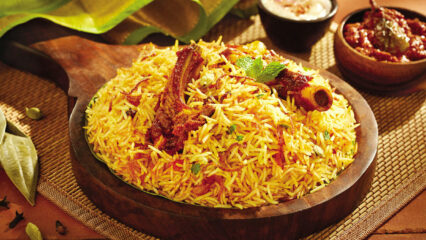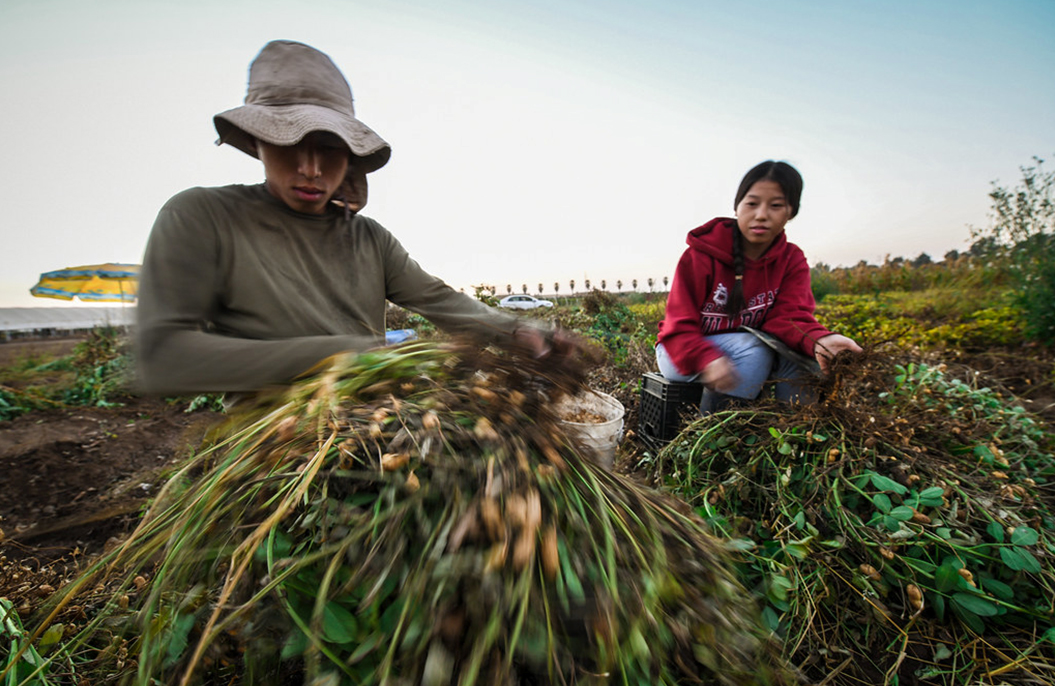How to Cook a Great Biriyani: A Culinary Journey Through India and the UAE
Biriyani, a fragrant rice dish layered with spiced meat, vegetables, or seafood, is a culinary icon of South Asia, particularly India. Revered for its complex flavors and versatility, biriyani is a celebration of culture, tradition, and regional diversity. In the UAE, with its vibrant Indian diaspora, biriyani is a beloved staple, enjoyed in homes and restaurants alike. This article explores what biriyani is, its regional variations across India, how to cook an authentic biriyani at home, and the best places in the UAE to savor it.
What is Biriyani?
Biriyani is a one-pot dish made by cooking basmati rice with marinated meat (chicken, mutton, beef, fish, or shrimp), vegetables, or paneer, infused with aromatic spices like saffron, cardamom, and cloves. The dish is typically layered and cooked using the dum method, where the pot is sealed to trap steam, allowing the flavors to meld. Biriyani is often served with raita (yogurt dip), salan (spicy gravy), or boiled eggs, and its hallmark is the balance of spice, fragrance, and texture.
Originating from Persia (the name derives from the Persian birinj biriyan, meaning “fried rice”), biriyani was brought to India by Mughal rulers and evolved into distinct regional styles. Each version reflects local ingredients, cooking techniques, and cultural influences, making biriyani a dish with countless interpretations.
Regional Variations of Biriyani in India
India’s diverse geography and culinary traditions have given rise to unique biriyani styles. Here are some of the most prominent:
- Hyderabadi Biriyani (Telangana): Known for its bold, spicy flavors, this biriyani comes in two forms: kacchi (raw meat and rice cooked together) and pakki (cooked meat layered with rice). It uses fiery red chilies, mint, and saffron, often served with mirchi ka salan (chili gravy). The kacchi style is a hallmark of Hyderabad’s Nizami cuisine.
- Lucknowi Biriyani (Uttar Pradesh): Also called Awadhi biriyani, this version is subtle and fragrant, emphasizing delicate spices like nutmeg, mace, and rose water. The meat is slow-cooked for tenderness, and the rice is parboiled before layering, resulting in a light, aromatic dish.
- Kolkata Biriyani (West Bengal): Influenced by Awadhi cuisine, Kolkata biriyani is milder, with a signature addition of potatoes alongside meat. It uses subtle spices, ghee, and sometimes boiled eggs, creating a unique texture and flavor profile.
- Malabar Biriyani (Kerala): Coastal and coconut-infused, this biriyani often features seafood or chicken, with short-grain rice like khaima. It incorporates curry leaves, coconut milk, and milder spices, reflecting Kerala’s tropical palate.
- Dindigul Biriyani (Tamil Nadu): Hailing from Tamil Nadu, this biriyani is tangy and spicy, using seera samba rice and a distinct spice blend with cubeb pepper. It’s less greasy and often paired with a cooling raita.
- Ambur Biriyani (Tamil Nadu): Popular in Vellore, this biriyani is fiery and meat-heavy, with a focus on red chili paste and minimal spices for a clean, intense flavor. It’s typically served with brinjal curry.
Each style reflects India’s regional diversity, from the fiery south to the delicate north, making biriyani a dish that adapts to local tastes while retaining its core identity.
How to Cook an Authentic Chicken Biriyani
Below is a recipe for a Hyderabadi-style chicken biriyani using the kacchi method, which is widely loved and adaptable. This recipe serves 4–6 people and balances authenticity with accessibility for home cooks.
Ingredients
For the Marinade:
- 1 kg chicken (bone-in, cut into medium pieces)
- 1 cup plain yogurt
- 2 tbsp ginger-garlic paste
- 1 tsp turmeric powder
- 2 tsp red chili powder
- 1 tsp garam masala
- 1 tsp biriyani masala (optional)
- 2 green chilies, slit
- ½ cup fresh mint leaves, chopped
- ½ cup fresh coriander leaves, chopped
- Juice of 1 lemon
- Salt to taste
For the Rice:
- 3 cups basmati rice (aged, long-grain)
- 2 bay leaves
- 4 cloves
- 2 cardamom pods
- 1 cinnamon stick
- 1 star anise
- Salt to taste
For Layering:
- ½ cup fried onions (store-bought or homemade)
- ¼ cup warm milk + pinch of saffron strands (soaked)
- ¼ cup ghee (clarified butter)
- ½ cup fresh mint and coriander leaves, chopped
- 2 tbsp rose water (optional)
Equipment
- Heavy-bottomed pot with a tight lid (or Dutch oven)
- Aluminum foil (for sealing)
- Tawa or flat griddle (for dum cooking)
Instructions
- Marinate the Chicken: In a large bowl, combine chicken with all marinade ingredients. Mix well, ensuring the chicken is coated. Cover and refrigerate for at least 4 hours, preferably overnight for deeper flavor.
- Prepare the Rice: Rinse basmati rice under cold water until the water runs clear to remove excess starch. Soak for 30 minutes, then drain. In a large pot, bring 8 cups of water to a boil with bay leaves, cloves, cardamom, cinnamon, star anise, and salt. Add rice and parboil for 5–6 minutes (rice should be 70% cooked, still firm). Drain and set aside.
- Layer the Biriyani: In a heavy-bottomed pot, spread a thin layer of ghee. Add the marinated chicken in an even layer. Top with half the parboiled rice, spreading it gently. Sprinkle half the fried onions, mint, coriander, and a drizzle of saffron milk. Add the remaining rice, followed by the rest of the onions, herbs, saffron milk, ghee, and rose water (if using).
- Dum Cooking: Cover the pot tightly with aluminum foil, then place the lid to create a seal. Heat a tawa or griddle on medium heat, place the pot on it, and cook on low heat for 45–60 minutes. The indirect heat ensures even cooking and prevents burning. Alternatively, bake in a preheated oven at 180°C (350°F) for 45 minutes.
- Rest and Serve: Remove from heat and let the biriyani rest, covered, for 10 minutes. Gently fluff the layers with a fork to mix the rice and chicken. Serve hot with raita, salan, or a boiled egg.
Tips for Success
- Rice Quality: Use aged basmati rice for the best texture and aroma. Avoid overcooking during parboiling to prevent mushiness.
- Spice Balance: Adjust chili powder to your taste. For milder biriyani, reduce chili and add more yogurt.
- Dum Seal: Ensure a tight seal to trap steam, as this is key to the dum method. If the lid isn’t tight, use dough to seal the edges.
- Scaling: For vegetarian biriyani, replace chicken with paneer, mushrooms, or mixed vegetables, and reduce marination time to 1 hour.
Where to Try Biriyani in the UAE
The UAE’s multicultural dining scene makes it a paradise for biriyani lovers. Below are top spots across the emirates to enjoy authentic biriyani, reflecting various Indian regional styles. Prices typically range from AED 15–30 per plate, making it an affordable treat.
Biriyani Spots in Dubai
- Biryani Pot (Al Barsha, Karama): Known for Hyderabadi and Kerala-style biriyanis, with generous portions and spicy salan. Perfect for takeaway or casual dining.
- Calicut Paragon (Karama): A go-to for Malabar biriyani, especially seafood versions. Their chicken biriyani is fragrant and coconut-rich.
- Al Ustad Special Kabab (Bur Dubai): Offers a flavorful Awadhi-style biriyani with tender mutton, paired with kebabs.
Biriyani Spots in Abu Dhabi
- Bait Al Mandi (Madinat Zayed): Specializes in Hyderabadi biriyani with a Yemeni twist, served with spicy gravy. Affordable and popular with locals.
- Annapoorna Restaurant (Tourist Club Area): A favorite for Tamil Nadu-style biriyani, especially Ambur and Dindigul varieties, with tangy flavors.
Biriyani Spots in Sharjah
- Shabestan (Al Majaz): Offers a mix of Hyderabadi and Lucknowi biriyanis, with a focus on aromatic spices and tender meat. Great for families.
- Pak Ghazi Restaurant (Al Nahda): Known for budget-friendly Kolkata-style biriyani with potatoes and eggs, reflecting Bengali influences.
Biriyani Spots in Ajman
- Al Ibrahimi Restaurant (Ajman Corniche): Serves a spicy Hyderabadi biriyani alongside local seafood dishes. A local favorite for its value and flavor.
Biriyani Spots in Fujairah
- Saffron Restaurant (Fujairah City): Offers Malabar and Hyderabadi biriyanis with coastal flair, perfect after a day at Al Aqah Beach.
Biriyani Spots in Ras Al Khaimah
- Kohinoor Restaurant (Al Nakheel): A hidden gem for North Indian biriyanis, including Lucknowi and Hyderabadi styles, with rich, aromatic profiles.
Biriyani Spots in Umm Al Quwain
- Al Madina Restaurant (Old Town): A small spot serving simple yet flavorful chicken biriyani, often with a local Emirati twist. Ideal for a quick meal.
Dining Tips
- Timing: Restaurants are busiest during lunch (12:00 PM–2:00 PM) and dinner (7:00 PM–10:00 PM). Visit during off-peak hours for quicker service.
- Customization: Most places allow you to adjust spice levels or choose between chicken, mutton, or vegetarian options.
- Ramadan: During Ramadan, many restaurants serve biriyani only after sunset (Iftar). Check hours in advance.
- Delivery: Apps like Talabat and Deliveroo make it easy to order biriyani to your hotel or home, especially in Dubai and Abu Dhabi.
Conclusion
Biriyani is more than a dish—it’s a tapestry of India’s culinary heritage, woven with spices, stories, and regional pride. From the fiery Hyderabadi biriyani to the delicate Lucknowi version, each style offers a unique experience, and mastering it at home is a rewarding endeavor. In the UAE, the dish thrives in the hands of skilled chefs and home cooks, reflecting the country’s deep connection to Indian culture. Whether you’re layering rice and chicken in your kitchen or savoring a plate at a bustling Dubai eatery, biriyani promises a sensory journey that’s both comforting and unforgettable. So, gather your spices, fire up the stove, or head to one of the UAE’s many biriyani hotspots to celebrate this timeless dish.
Modern agriculture often feels caught between two worlds: ancestral knowledge passed through generations and digital systems built in laboratories and data centers. Yet these worlds are not opposites.
 How to Cook a Great Biriyani: A Culinary Journey Through India and the UAE
How to Cook a Great Biriyani: A Culinary Journey Through India and the UAE
Biriyani, a fragrant rice dish layered with spiced meat, vegetables, or seafood, is a culinary icon of South Asia, particularly India. This article explores what biriyani is, its regional variations across India, how to cook an authentic biriyani at home, and the best places in the UAE to savor it.
 Shopping in the UAE: A Traveler’s Guide to Malls, Markets, and Everyday Convenience
Shopping in the UAE: A Traveler’s Guide to Malls, Markets, and Everyday Convenience
The UAE is a shopper’s paradise, but it’s also incredibly practical for everyday purchases. Here’s a deeper look into how shopping works for travelers in the UAE — from high-end malls to local markets and delivery apps.
 Holistic Health Activities in Dubai: A Growing Wellness Trend
Holistic Health Activities in Dubai: A Growing Wellness Trend
Dubai has rapidly become a global hub not just for business and luxury, but also for health and wellness. With a strong push toward healthier lifestyles and the rising popularity of alternative medicine, holistic health activities in Dubai are attracting both residents and visitors alike.
Dubai has rapidly become a global hub not just for business and luxury, but also for health and wellness. With a strong push toward healthier lifestyles and the rising popularity of alternative medicine, holistic health activities in Dubai are attracting both residents and visitors alike.
The UAE summer is no joke—temperatures can soar above 45°C, and the humidity can make it feel even hotter. Here are eight practical and trendy tips to help you beat the heat and thrive during the UAE’s scorching summer months.
In the heart of Dubai’s Palm Jumeirah, Genatsvale, a Georgian restaurant with its own story to tell, invites everyone to experience Georgia in a way that goes beyond being just food, but also about connection, celebration, and sharing.




